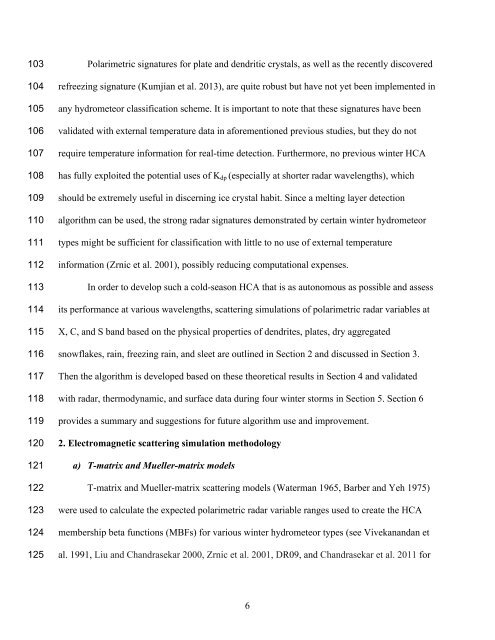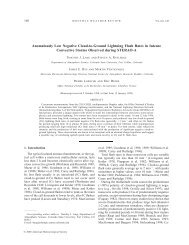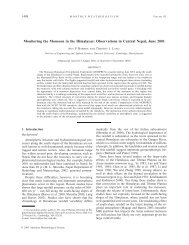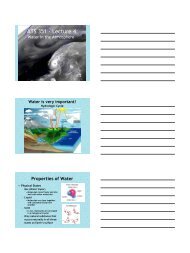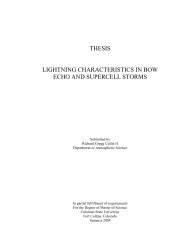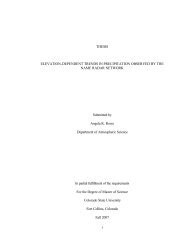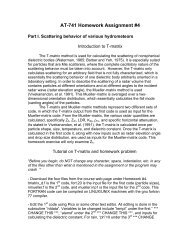1 A dual-polarization radar hydrometeor classification algorithm for ...
1 A dual-polarization radar hydrometeor classification algorithm for ...
1 A dual-polarization radar hydrometeor classification algorithm for ...
You also want an ePaper? Increase the reach of your titles
YUMPU automatically turns print PDFs into web optimized ePapers that Google loves.
103104105106107108109110111112113114115116117118119120121122123124125Polarimetric signatures <strong>for</strong> plate and dendritic crystals, as well as the recently discoveredrefreezing signature (Kumjian et al. 2013), are quite robust but have not yet been implemented inany <strong>hydrometeor</strong> <strong>classification</strong> scheme. It is important to note that these signatures have beenvalidated with external temperature data in a<strong>for</strong>ementioned previous studies, but they do notrequire temperature in<strong>for</strong>mation <strong>for</strong> real-time detection. Furthermore, no previous winter HCAhas fully exploited the potential uses of K dp (especially at shorter <strong>radar</strong> wavelengths), whichshould be extremely useful in discerning ice crystal habit. Since a melting layer detection<strong>algorithm</strong> can be used, the strong <strong>radar</strong> signatures demonstrated by certain winter <strong>hydrometeor</strong>types might be sufficient <strong>for</strong> <strong>classification</strong> with little to no use of external temperaturein<strong>for</strong>mation (Zrnic et al. 2001), possibly reducing computational expenses.In order to develop such a cold-season HCA that is as autonomous as possible and assessits per<strong>for</strong>mance at various wavelengths, scattering simulations of polarimetric <strong>radar</strong> variables atX, C, and S band based on the physical properties of dendrites, plates, dry aggregatedsnowflakes, rain, freezing rain, and sleet are outlined in Section 2 and discussed in Section 3.Then the <strong>algorithm</strong> is developed based on these theoretical results in Section 4 and validatedwith <strong>radar</strong>, thermodynamic, and surface data during four winter storms in Section 5. Section 6provides a summary and suggestions <strong>for</strong> future <strong>algorithm</strong> use and improvement.2. Electromagnetic scattering simulation methodologya) T-matrix and Mueller-matrix modelsT-matrix and Mueller-matrix scattering models (Waterman 1965, Barber and Yeh 1975)were used to calculate the expected polarimetric <strong>radar</strong> variable ranges used to create the HCAmembership beta functions (MBFs) <strong>for</strong> various winter <strong>hydrometeor</strong> types (see Vivekanandan etal. 1991, Liu and Chandrasekar 2000, Zrnic et al. 2001, DR09, and Chandrasekar et al. 2011 <strong>for</strong>6


